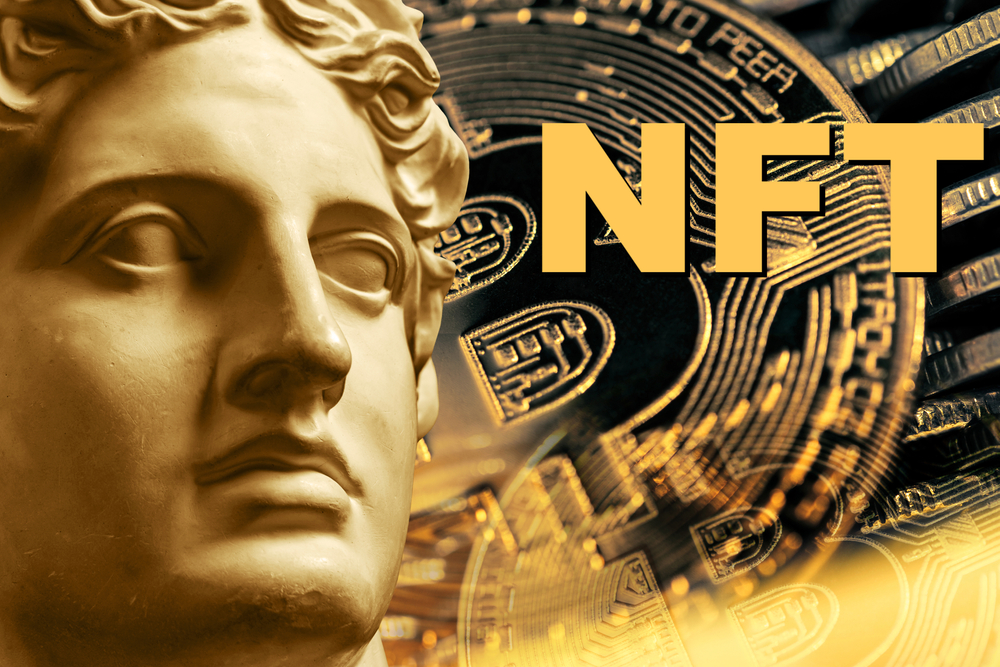NFTs have become a phenomenon since the first one “Quantum” was created in 2014 by Kevin McCoy. Quantum was a pixelated image of an illuminating octagon with several circles and other shapes.
And while the world attributes the innovation to McCoy, it wasn’t until 2021 that NFTs gained traction. When Winklemann’s EVERYDAY collage was auctioned for a mouthwatering $69M, the world awoke to the new reality that NFTs were more than some images or GIFs.
Since then, they have continually grown in popularity, with many digital artists leveraging its popularity to sell their rare works for massive amounts. You might say that the money pumped into the sector has helped it grow in popularity.
True, but it isn’t just about the money. The emergence of NFTs has changed a lot of things, and their growing use cases are proof that they are not a trend but something that has come to stay for the longest possible time.
So, the question is, what is the role of NFT in arts? Will their incursion into the art world hamper or positively influence the growth of art? Before answering these questions, let’s briefly explain what it is for crypto newbies.
What Are NFTs?
NFT is the most mentioned word in DeFi (alongside cryptocurrency of course), and that portrays how popular it is. NFTs or Non-fungible Tokens are digital assets that symbolize a real-life object. It could represent a video, letter, piece of document, picture, or audio.
This digital asset class is a one-of-a-kind, rare piece of item that can’t be replicated or reproduced. An NFT item has no duplicate because it has one owner at a time. The chances of getting defrauded by some malicious people are slim to zero.
Once an NFT is purchased, the records of the transaction are stored on the parent blockchain where it was minted. The blockchain could be Solana, Ethereum, Cardano, etc.
Once the transaction is stored, the owner has full rights to the item and can sell it. When this happens, the ownership changes. There can’t be two owners simultaneously.
Owning a digital piece of art or an NFT is similar to purchasing a painting at an auction or from an artist. The difference here is instead of using fiat to acquire the art, you use cryptocurrencies. You may ask why they are expensive, right?
Well, anything art is costly because of its uniqueness and rarities. Owning them elevates your self-worth because you’re confident you are the only one on earth with such a piece. So, in the DeFi world, the uniqueness of an NFT item makes it expensive.
NFTs and Art: The Intersection of Both World and Their Symbiotic Relationship
Man has always loved arts from time immemorial and never stopped painting or creating beautiful works. Art itself is love, an expression, and nature itself. However, only a certain number of people in this current generation pay attention to the arts.
There’s a significant drop in interest in its value and meaning, and we suspect that the internet and technology have something to do with it. At least, a part of it.
But, the same technology is here to revive the long-lost interest in art. Thanks to blockchain, NFTs have become the force the art world needs to stir up the interest in art.
Since the world is more social, and the level of online activities has grown exponentially, digital artists can turn their artworks into NFTs for customers’ consumption. That’s NFT helping the art world.
That’s just one thing. How do NFTs benefit the artists themselves? Modern artists would attest to the difficulties they experience in doing art auctions and exhibits, from the cost of an exhibition to distance and receiving nothing or far less for their efforts.
It has worsened over the years, and the Covid-19 pandemic, which is still a force to reckon with in some parts of the world didn’t help matters.
NFTs have given artists the chance to make a living from their craft without depending on galleries or auction houses. Rather than traveling long distances to sell an artwork or paying some outrageous amount of exhibition fees, artists can sell directly to the customer in NFTs on marketplaces for good sums.
Artists can earn so much from turning their artworks into NFTs without undergoing the exhaustion that galleries or auction houses will put them through. Interestingly, artists can set up their royalties to receive a commission from subsequent sales. This is untypical of physical art galleries.
Final Take
The incursion of NFT exhibits and auctions into arts is a blessing rather than a curse. Digitizing artworks have altered how we perceive art and brought in a new stream of income that no one ever thought would happen.
Many artists are still into physical auctioning and exhibitions, and some art lovers still prefer to buy from auction houses. However, the universe is digitalizing, and it’s only a matter of time before NFTs take over the art industry entirely.
This is a Contributor Post. Opinions expressed here are opinions of the Contributor. Influencive does not endorse or review brands mentioned; does not and cannot investigate relationships with brands, products, and people mentioned and is up to the Contributor to disclose. Contributors, amongst other accounts and articles may be professional fee-based.

